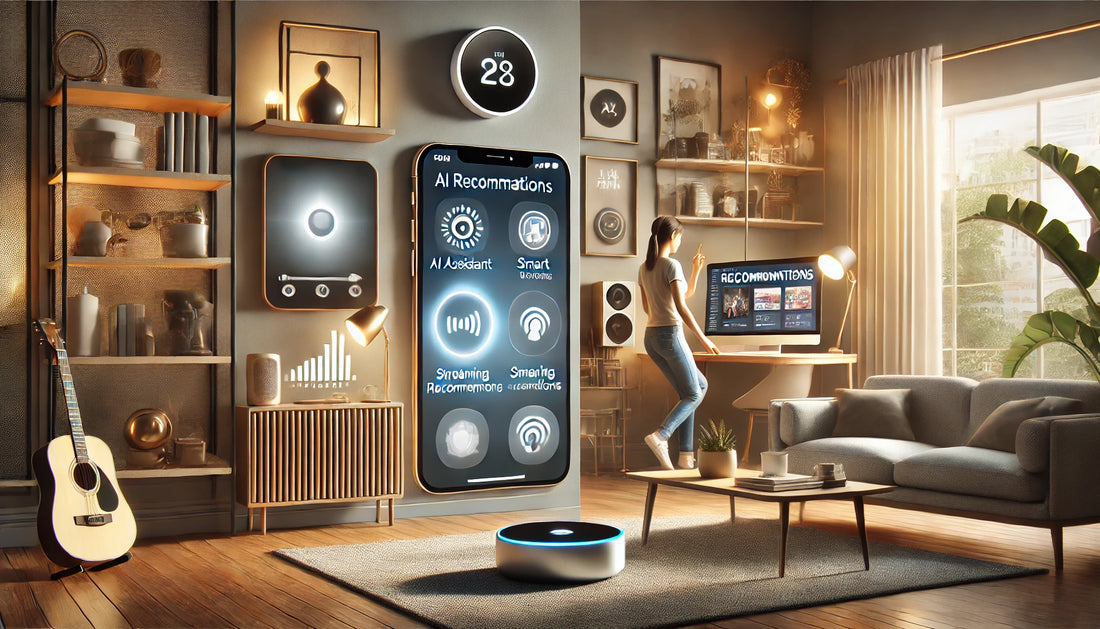
AI in Everyday Life: 10 Ways You’re Already Using It
Share
Artificial Intelligence (AI) has become an integral part of modern life, seamlessly blending into daily routines in ways many of us may not even notice. From the moment you wake up to the time you go to bed, AI-powered tools and technologies are working behind the scenes to make your life easier, more efficient, and more personalized. Here's a closer look at ten key areas where AI is already making a difference in your day-to-day life.
1. Personalized Recommendations
One of the most visible ways AI impacts our lives is through personalized recommendations. Whether you're scrolling through Netflix, shopping on Amazon, or listening to playlists on Spotify, AI algorithms analyze your preferences and suggest content tailored to your tastes. These systems learn from your interactions, creating an experience that feels uniquely yours.
How It Works
Recommendation systems use machine learning models to analyze large datasets of user behavior, such as what you watch, click, or purchase. Based on this, they predict what you’ll like next, often with surprising accuracy.
2. Digital Assistants
Digital assistants like Siri, Alexa, and Google Assistant have revolutionized how we interact with technology. These AI-powered helpers can perform a wide range of tasks, from setting reminders and playing music to answering questions and controlling smart home devices.
How It Works
Natural Language Processing (NLP) enables these assistants to understand and respond to your voice commands, while machine learning allows them to improve over time as they interact with you.
3. Smart Home Devices
From smart thermostats like Nest to intelligent lighting systems such as Philips Hue, AI is at the core of many smart home technologies. These devices learn your habits and preferences to optimize energy use, enhance convenience, and even improve security.
Examples
- Smart Thermostats: Adjust temperatures based on your routines.
- Smart Locks: Use facial recognition or phone proximity to grant access.
- Security Cameras: Detect unusual activity and alert you in real time.
4. Social Media Algorithms
Ever wondered why your Instagram feed or TikTok’s "For You" page feels so addictive? AI algorithms are constantly working behind the scenes to analyze your interactions and surface content most likely to keep you engaged.
How It Works
These algorithms analyze everything from your likes, comments, and shares to the time you spend on posts, creating a feedback loop to deliver more of what you enjoy.
5. Healthcare and Fitness
AI is increasingly integrated into healthcare and fitness tools, helping people monitor their health and stay fit. Wearable devices like Fitbit and Apple Watch track your activity, heart rate, and sleep patterns, using AI to provide insights and recommendations.
In Healthcare
AI-powered apps can analyze symptoms and even offer preliminary diagnoses, while advanced systems assist doctors in detecting diseases like cancer through image analysis.
6. Fraud Detection
If you've ever received an alert from your bank about a suspicious transaction, you’ve experienced AI in action. Financial institutions rely on AI to detect and prevent fraudulent activity by analyzing transaction patterns and identifying anomalies.
How It Works
Machine learning models flag unusual behavior, such as a sudden purchase in a foreign country, allowing banks to respond in real time.
7. Online Shopping
E-commerce platforms leverage AI for a smoother shopping experience. From chatbots that assist with queries to visual search tools that find products based on images, AI enhances every step of the buying process.
AI Features in Shopping
- Virtual Try-Ons: See how clothes or makeup look before purchasing.
- Dynamic Pricing: Adjust prices based on demand and competition.
- Chatbots: Provide 24/7 customer service.
8. Email Filtering
Your inbox is another place where AI is hard at work. Spam filters, like those in Gmail, use machine learning to sort legitimate emails from unwanted ones. Over time, these filters become more effective at identifying junk and phishing attempts.
AI Advancements
AI also powers features like smart replies and predictive text, helping you compose messages faster and more efficiently.
9. Navigation and Travel
From Google Maps to Uber, AI is essential for modern navigation and travel services. These tools optimize routes, predict travel times, and adapt to changing traffic conditions in real time.
AI in Action
- Ride-Sharing Apps: Match drivers with passengers and calculate fares using AI.
- Navigation Apps: Offer alternate routes based on real-time traffic data.
- Airline Pricing: Dynamically adjust ticket prices using demand forecasts.
10. Language Translation
Apps like Google Translate and DeepL use AI to break language barriers. Advanced models like OpenAI’s GPT can generate translations that capture not just words but context and nuance.
How It Works
AI translation systems use deep learning to process massive datasets of multilingual text, enabling them to understand grammar, idioms, and cultural references.
The Future of AI in Everyday Life
As AI technology continues to evolve, its role in daily life will only grow. Innovations in autonomous vehicles, virtual reality, and personalized healthcare promise to make AI even more integral to our routines. While these advancements bring exciting possibilities, they also raise important ethical questions about privacy, bias, and accountability.
From powering your favorite apps to improving healthcare outcomes, AI has become a silent but indispensable partner in everyday life. Its presence is so ubiquitous that it’s easy to overlook, but its impact is undeniable. Understanding how AI works can not only demystify the technology but also help us make informed decisions about how to use it responsibly.


